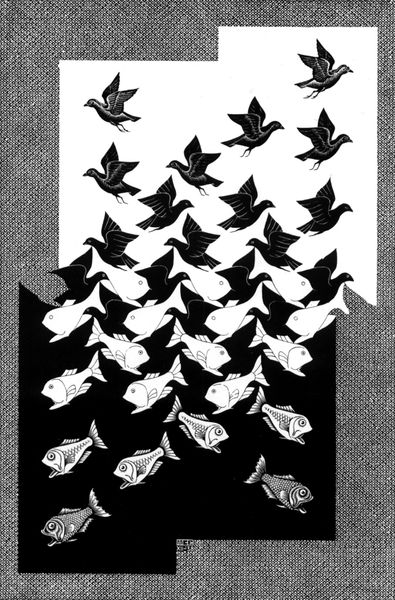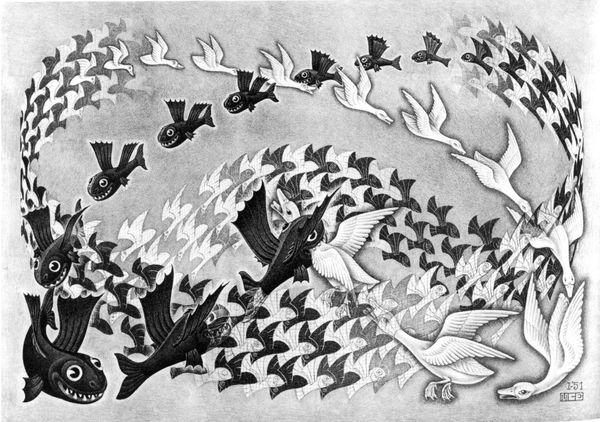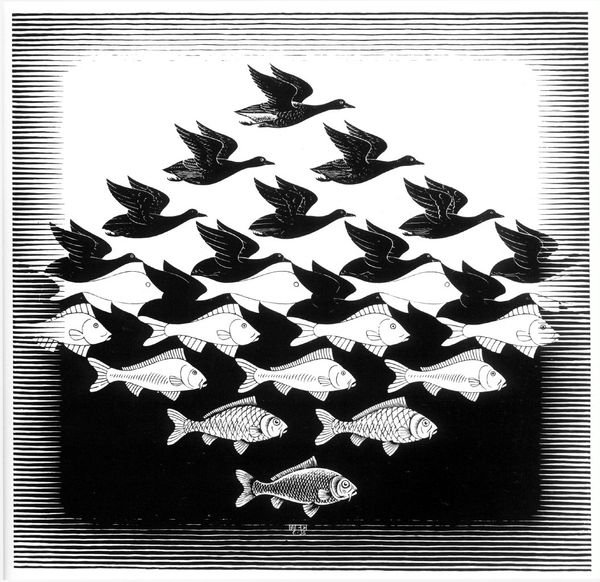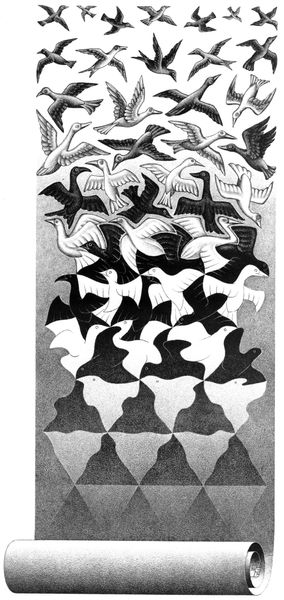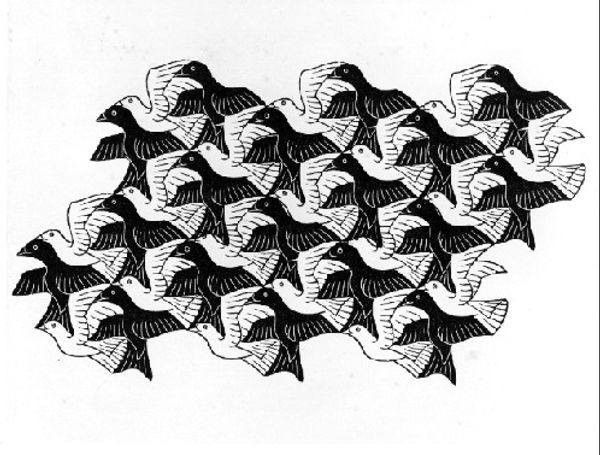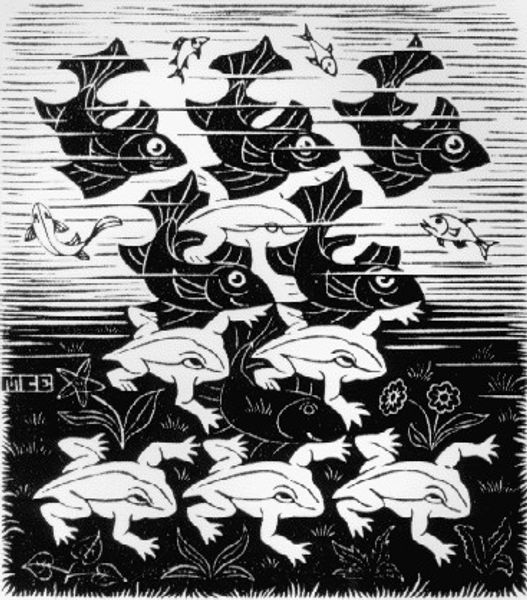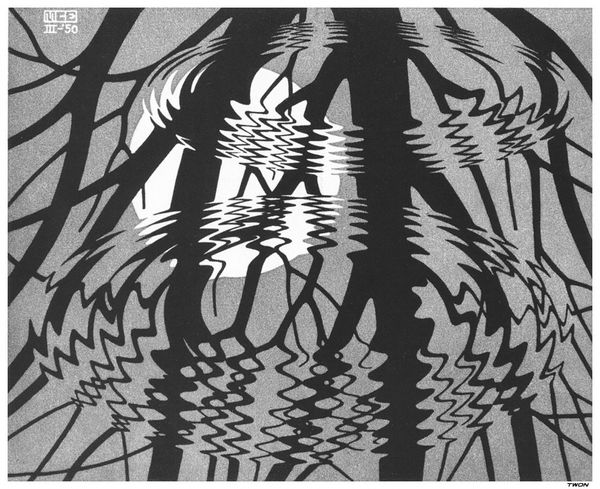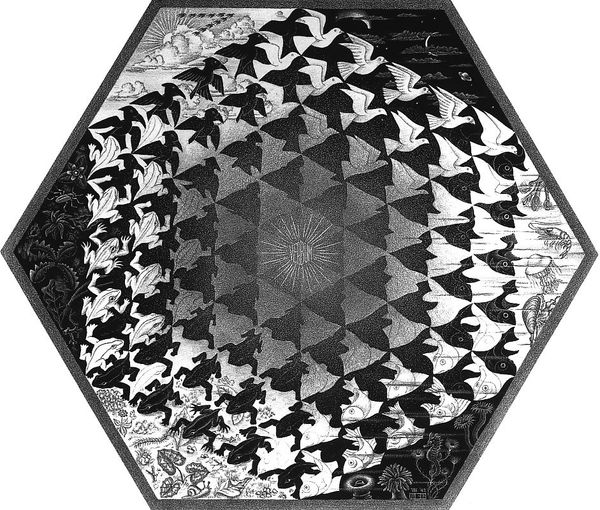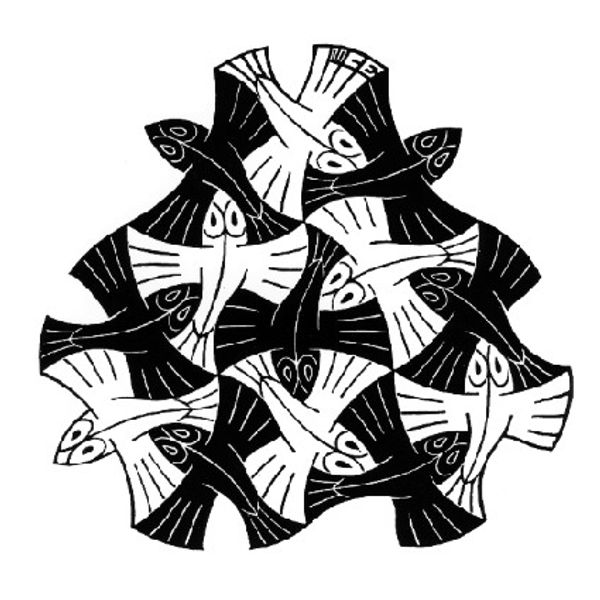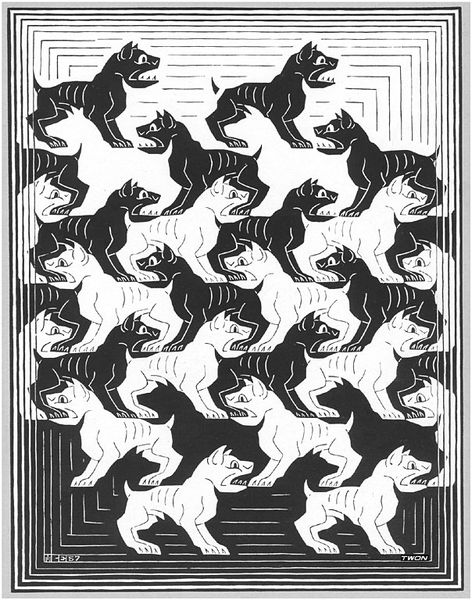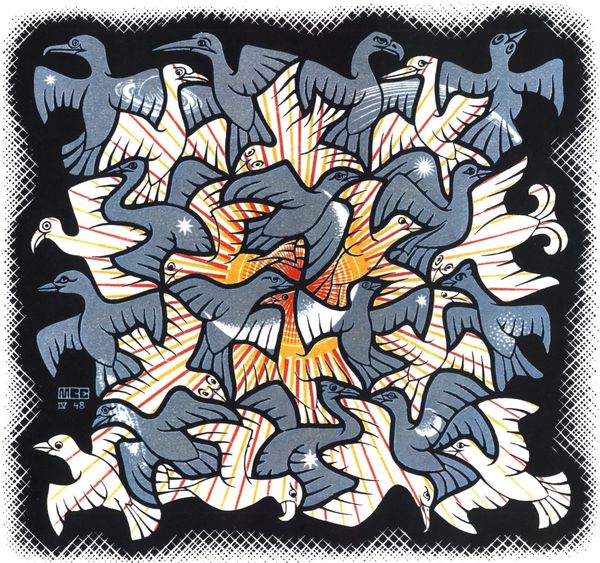
graphic-art, print
#
graphic-art
#
animal
# print
#
figuration
#
geometric
#
abstraction
Copyright: M.C. Escher,Fair Use
Editor: Here we have M.C. Escher's "Swans" from 1956, a graphic print. The stark black and white shapes immediately give the artwork a strong sense of contrast. It’s almost mesmerizing with its repeating pattern. What is your take on it? Curator: What strikes me is how Escher challenges our notions of "high" art. Here we have something meticulously crafted – a print – yet the repetition and almost mechanical precision draws attention to the process. The way the swans tessellate highlights labor. He isn't just representing swans; he's dissecting the mechanics of representation itself. Editor: The swans do interlock perfectly. It is mesmerizing. I didn’t think of it in terms of the labor involved. Curator: Exactly. The image itself becomes a product, reflective of postwar industrial processes. Consider how accessible prints were becoming, a form of artistic consumption quite different from unique oil paintings. It is reproducible on an infinite scale! The woodblock and graphic lines show how mass production impacted our consumption. Does that make sense? Editor: It does! So, you’re saying the medium and the way it's produced are as important as the swans themselves? Curator: Precisely. The materiality shapes the message. Think about the wood that makes the carving. This impacts the quality and the final image as well as the historical location of the craft itself. This shift opens doors to understand and celebrate labor, skill, and technique inherent in crafting processes traditionally undervalued. Editor: I see it now; it isn't just about swans, but about the means of making and its place in the culture of the time. Thanks! Curator: My pleasure. Considering the processes involved allows us to appreciate not only the finished artwork, but its complex relationship with manufacturing processes that can challenge the definitions of fine art versus industrial work.
Comments
No comments
Be the first to comment and join the conversation on the ultimate creative platform.
